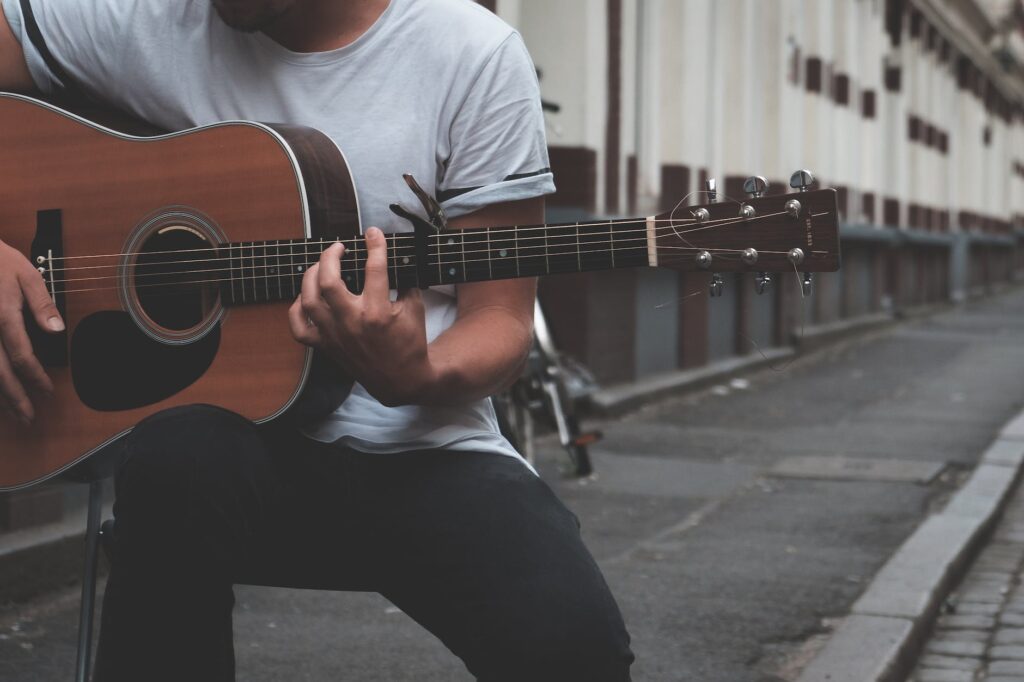It’s been a pretty turbulent 2023 and early 2024 for me, so I think it’s high time to slow things down.
My first post of the year is usually a blog-focussed motivator for myself; Pointers on how the blog could improve and lessons learned, which hopefully other bloggers can get something from. But this year is different, the blog has ticked along fine, so this year’s update is a lot more personal if you don’t mind.
2023 was a manic, awful year.
To sum up my year, it started running around after bands, with a little running about after bands in between, and ended with, you’ve guessed it, more running around after bands.
Throughout, it’s been a mixture of work, house renovations, an unforgiving family/social calendar, and an almost weekly helping of bad, sometimes tragic news. Not just for me, but also for an unusually high number of close relatives and friends.
Once again, as is always the case, my only comfort came through the guitar, but sadly the world of the guitar is changing for the worse.
Is live guitar music dead?
Today, we live in a world of no amps, modelers, direct to front-of-house (FOH), in-ear monitors (IEM), and click tracks. It’s all very convenient and high-tech. On top of this, I’ve noticed the role of the guitarist has changed. It’s no longer about (along with the vocalist) being the bedrock of the band’s identity. It’s no longer about crafting the band’s overall sound and improving it along the way. Now? We’ve been relegated to the back line. It’s a case of can you or can you not deliver a solo within the timeframe? Now, it’s more like a session guy. You don’t have the input.
To cut a long story short. Technical things have taken precedence over the music. Engineers now run the show and we guitarists have to work around them.
And no, this isn’t just sour grapes after one bad experience. It seems the norm these days is millennials who have played for five minutes and think they’re Bon Jovi.
Modeling vs real guitar amps.
I get it. Not having an amp is convenient. There’s less to carry, the direct signal goes directly to FOH so there are fewer wires and less stage volume, aiding the battle with feedback. The setup is also easier and quicker, and these days amp modeling has come along leaps and bounds. But none of that matters.
What matters is tone. And to get amp modeling sounding and reacting like a real amp, while possible, is going to take you such a long time and mean so much effort you’ll wish you had just plugged into your amp in the first place. Indeed, getting there isn’t half the fun of dialing in a decent valve amp anyway. Personally, I’ve only ever used modeling as a handy backup, fine in a pinch, but ultimately a tonal compromise until you’re back in the game. In my opinion, your amp is just as much, if not more part of your sound than the actual guitar. It’s why most people in the know spend more money on the amp than the guitar.
With modeling, the guitar tone quality barrier has been significantly lowered because people have stopped giving a shit and would rather just get on with it. Now, it just needs to be good ‘enough’, and loud enough, Honing a great tone is secondary as, apparently, the audience doesn’t care about that. Well, they at least used to care, when music was a whole lot more affecting than it is today.
To be fair, the modeler I’ve been using, the Valeton GP-200, punches well above it’s weight for a fair price, Check them out here.
IEM vs stage monitors
Similarly, going the newer route of using IEMs has its conveniences and advantages, but good ones are vastly more expensive than traditional monitors, and, if they go wrong, you’re stuffed! Setup really isn’t all that straightforward if you go wireless and have frequency issues either.
Like guitar amps, it seems that in today’s world, we have solutions to problems that have created other problems and made things sound worse along the way. We’ve thrown the baby out with the bathwater. Like everything in today’s world, things come easier but are far less satisfying. Who wants their next gig to feel like a silent disco? Not the audience, and certainly not me.
As the years go by, more and more engineers and more and more venues will push for these new technologies whilst rules governing volume get tighter. The future doesn’t look bright, does it?
The way forward
I think there is hope. Sound engineers aren’t all bad, some will encourage you to stick an SM57 in front of your amp and choose whatever monitoring you wish, but it still feels like time to let go, time to stop fighting against the tide.
Not all bands will view a guitarist as a hired gun, a means to an end, and I’m encouraged that despite the popularity of modelers it’s still not a done argument. When put to the test, a guitar amp will always vastly outperform modeling for absolutely everything: Ease of use, tone quality, responsiveness, the ability to punch through a mix, and even price nowadays when you consider the Line 6 Helix for example. The versatility that having one great tone affords you is far more than a thousand presets that sound like dog dirt.
It’s on us to make it happen. If we want to keep something good, we need to keep buying the gear and keep the industries going. If we stop buying Marhalls, there will eventually no longer be a Marshall.
In fact, buy one today and keep the faith!
In the end, the way forward is of course to do what makes you happy as I guess none of the above has. I take solace in the fact that perhaps I was already on the right path and have regularly been diverted by others, so in 2024 I think maybe listen to my conscience a little more, and trust myself a little more.
Local live bands have been playing Town Called Malice for decades, without a click track, IEMs, and modelers. Does it really sound better now? Do you really need to cover that Hammond part with a backing track?
At the end of the day, if all the audience want is the song, note for note, in it’s original format, why not just listen to the song instead?
Nope. 30 years experience tells me we’re all starting to take ourselves a little too seriously on the local music scene nowadays.
Happy 2024
Rant over. I hope you all (Yes even the IEM and modeler users) have a happy and prosperous 2024. Whatever you do you, do whatever makes you happy, with whatever or whoever makes you happy, not what is expected of you by others. Go see friends you haven’t seen for a while. Don’t be fearful of failure or repercussions. Be brave, true to yourself, be in control, and keep playing.
Actually, the guitar hasn’t been played for a few days, but when I do pick it back up, I’ll be playing the music I want, how I want it. And so should you, because life’s too short.
Happy 2024 everyone. I hope you all have a brilliant year!



